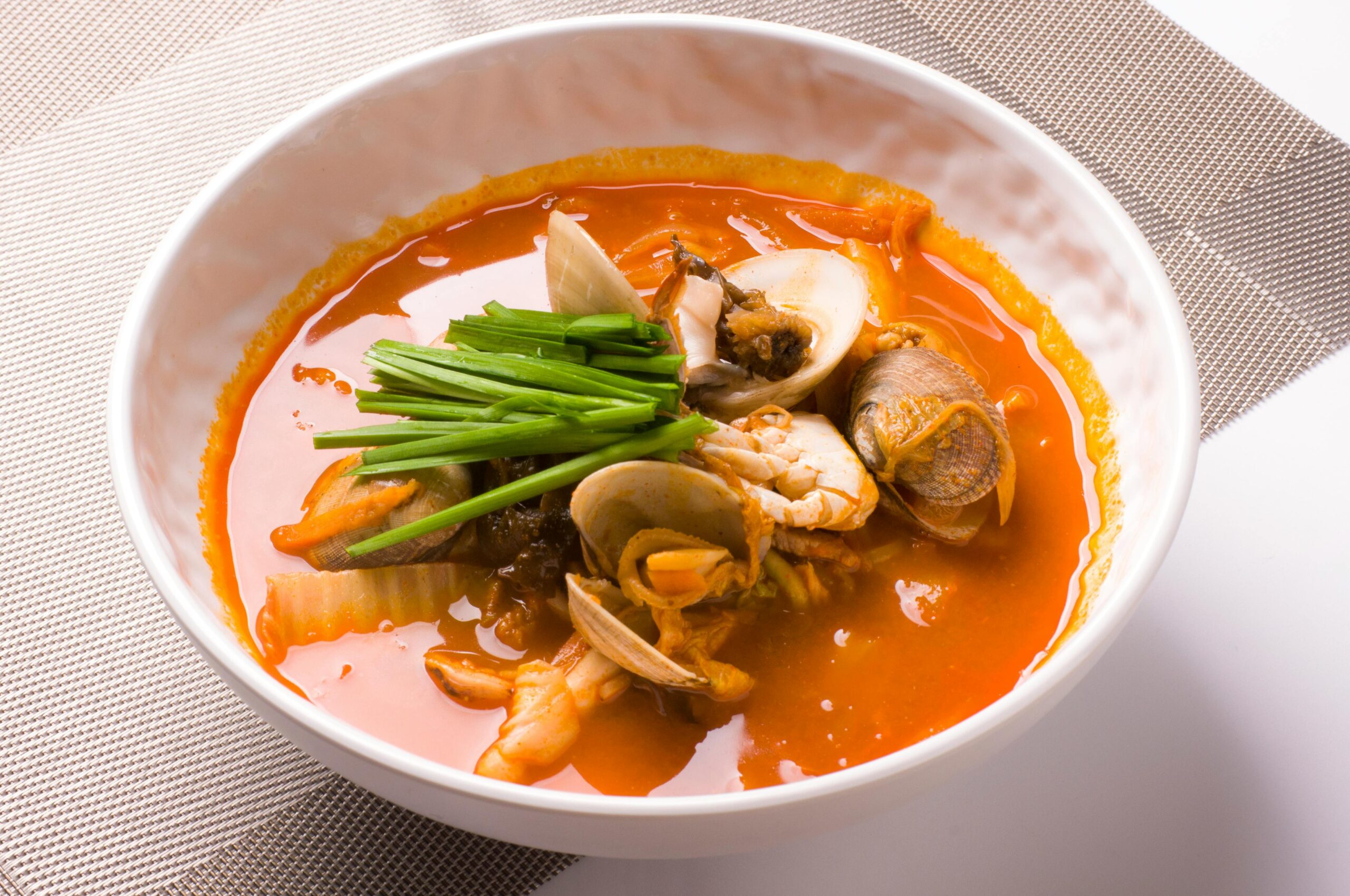Discovering Jjamppong: A Popular Korean Noodle Soup
Jjamppong (Korean: 짬뽕) is a distinctive Chinese-style Korean noodle soup, renowned for its bold flavors and vibrant textures. This spicy dish features a rich, red broth typically made from seafood or pork, accented with gochugaru, a Korean chili powder that lends a delightful heat. The soup is a colorful medley of ingredients, often including onions, garlic, Korean zucchini, carrots, cabbages, squid, mussels, and pork, making it a hearty and satisfying meal. Jjamppong is predominantly served in Korean Chinese restaurants and has become one of the most beloved staples of Korean cuisine.
A Brief History of Jjamppong
The roots of jjamppong can be traced back to the Chinese Shandong-style chǎomǎmiàn (炒碼麵), which was adapted during the Japanese occupation of Korea (1910–1945). Japanese influences led to the renaming and reinterpreting of the dish, giving it its current moniker. Over time, the preparation evolved, shifting from a milder broth typical of its Chinese origins to a spicier variant, emphasizing stir-fried seafood and vegetables alongside the characteristic chili elements. This transformation gained popularity in the 1960s and solidified jjamppong as a favorite among Koreans of all ages.
Variation and Serving Styles of Jjamppong
Jjamppong boasts an array of variations that cater to different tastes and preferences. Popular options include:
- Samseon Jjamppong: A premium version that features an assortment of seafood.
- Pork Backbone Jjamppong (뼈짬뽕): A rich concoction that blends pork bone broth with seafood, chili oil, and vegetables, inspired by Gamja-tang.
- Gul Jjamppong: A seafood variant that includes oysters, often served in a spicy white broth.
- Gochu Jjamppong: A spicier rendition accented with Cheongyang chili peppers.
- Jjamppong Bap (짬뽕밥): A unique take where rice replaces noodles in this flavorful soup.
Whether you opt for the traditional recipe or a creative variation, jjamppong promises a captivating culinary experience that reflects the rich history and evolving nature of Korean cuisine.
